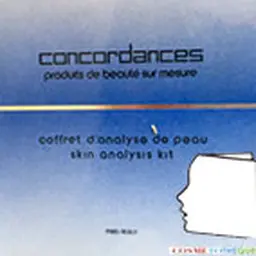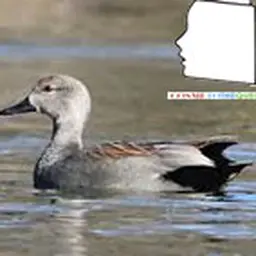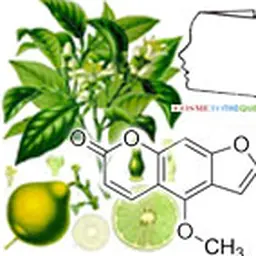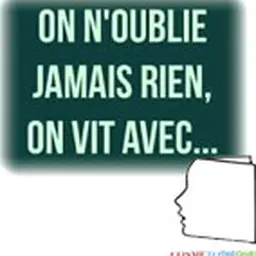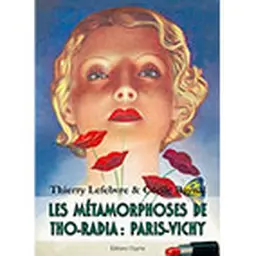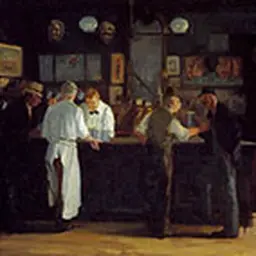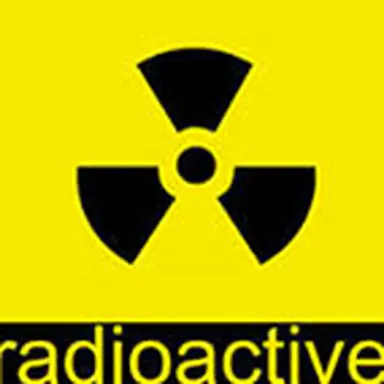
We are in the 21st century, and for the younger generations who have known Fukushima, Chernobyl or Three Miles Island, it may seem crazy to discover that radioactivity was a miraculous step, and even more so in the field of beauty. This is what the excellent thematic exhibition at the Palais de la Découverte from 3 December 2013 to 8 June 2014 shows us: from Homer to Oppenheimer.
This property of matter, which has fascinated several generations of scientists and researchers, is indeed at the centre of many polemics, some founded, others much less.
First of all, let us briefly recall what radioactivity is. It is the priority of some elements in the periodic table of elements to spontaneously change over time into other elements, emitting energy in the form of radiation. Radioactivity is a phenomenon that was discovered in 1896 by Henri Becquerel on uranium (uranium rays), and very quickly confirmed by Marie Curie for radium. It is a natural physical phenomenon during which unstable atomic nuclei, known as radioisotopes or radioelements, spontaneously transform ("decay") into more stable atomic nuclei that have lost part of their mass. This transformation is done by releasing energy in the form of various radiations called, according to the case, of the shelves α, from shelves β or shelves γ. They correspond to different energy levels, which among other things gives them different penetration properties.
The activity is measured in Bc (Becquerel), which corresponds to the number of disintegrations per second in the sample. The other means of measurement are expressed in grays (Gy), which define the dose absorbed by the irradiated surface. This concerns high doses (radiotherapy). Finally, we speak of sieverts (Sv) for radiation protection. This measure reflects the biological effect of radiation on biological tissue. It is often expressed in milli sieverts (mSv).
Radioactive elements are defined in particular according to their"half-life", i.e. the time at the end of which the initial radioactivity is halved. This period is very variable depending on the elements: 2 minutes for O₁₅, 30 years for Cesium, 14 billion years for Thorium.
The adventure began at the end of the 19th century when several researchers became interested in this question. First of all Röntgen, to whom we owe the discovery of X-rays[Note : X-rays are a form of high frequency electromagnetic radiation . The discoverer gave it the usual name of the unknown in mathematics, X. X-rays and gamma rays are of the same nature, but are produced differently], then the"uranic" ray[Note : Radiation emitted by uranium] that we owe to Becquerel. These discoveries will revolutionize scientific thought. The year is 1896. This work was soon followed by spectacular scientific advances by Pierre and Marie Curie, who isolated two new elements emitting uranic radiation: Polonium and Radium.
Research then continued, with a break during the Great War, with the work of Niels Bohr in particular. The discovery of artificial radioactivity was the work of the Curia again in 1934. It will bring about a real revolution in the exploration of the living.
Then, the first patent on energy production will intervene in 1939 by a group of researchers who shows that the fission of uranium can produce a chain reaction producing heat. This application will lead to more or less dramatic consequences: atomic bombs or nuclear energy production.
The properties of radioactivity will lead to many applications, some of which may still be in our daily lives. But very quickly, a real addiction to radioactivity will develop and give birth to new products today.
Thus, at the beginning of the 20th century, radium, whose properties are still partly unknown, began a meteoric career. Its intense radiation is used very early to burn cancerous rumors or treat skin diseases. It is quickly perceived as a miracle remedy, a guarantee of health, healing and even rejuvenation. During those crazy years of radium and its cousins, we bathe in radioactivity and we consume it. Taking as an example the applications of radioactivity in health fields, such as radiography, which proposes a real revolution by making it possible to see"inside without opening", many applications will be proposed.
Manufacturers are flooding the market with radium-based products: - ointments, - creams, - powders, - pills, - lozenges, - suppositories, - radium-based wool, - underwear, - sheaths, - cotton, food fertilizers or feed for farm animals.
Cosmetic products are particularly popular. Creams, razor blades and other salts claim the presence of radium… even though this was not always the case.
The importance of the phenomenon will go until the brands find muses as will be the case later. This is how Miss France 1948 became the brand's ambassador.
Tho-Radia whose saga we will tell you soon.
While radium fountains make it possible to complete the baths with a little radium, large mineral waters highlight their radioactivity in order to guarantee good health, even a bath of youth bringing eternal youth: Vichy, Tessières, Saint Pardoux, etc..
In 1928, with the creation of the International Commission for Protection against X-rays and Radium, rules concerning the use of ionising radiation were established. But the brands existed with less intensity and some associated with this adventure survived until the early 1960s.
In the world of beauty, two applications will stand out from the others, one rather folkloric and which has not stood the test of time, the other, much more serious, which although discussed in some areas, is still in application. - The first is the use of radioactivity and more specifically radium or thorium as active ingredients in certain products. The best known or most famous will be the range Tho-Radia with several products, care and make-up. - The other application will be radio sterilization. In this era where the absence of contamination remains an objective, this treatment method retains a certain relevance, among other things when it comes to treating certain elements that do not support other treatment methods, or certain finished products.
On Tho-Radia cream Cécile Raynal & Thierry Lefebvre of the Revue d'histoire de la Pharmacie, have done us the honour of writing an article based on the excellent work of which they are the authors: Les métamorphoses de Tho-Radia : Paris-Vichy (éditions Glyphe). View this article .
On radio sterilization The Aérial group, specialized in this treatment method, offers a contribution providing a broad and exhaustive overview of cosmetic applications - soon online.
Enjoy your reading.
| Among the first, let us recall the"small curies" which are vans equipped with X-ray equipment to help military doctors intervene on the wounded. The first mission will be on the front of the first battle of the Marne. |
For more on this subject • Radioactivity on Wikipedia • Fukushima nuclear accident on Wikipedia • Chernobyl on Wikipedia • Three Mile Island Nuclear Generating Station on Wikipedia • TDC - n°1030 - February 2012 - Radioactivity. • The Radium Case , on RobinDesBois.org • The"emiraculous powers" of radioactivity on Dissident-media.org • Radioactivity - Medicine - Radium on musee.curie.fr
| Contribution made by Jean Claude Le Joliff A biologist by training, Jean Claude Le Joliff was an R&D man for many years. Successively in charge of R&D, then of Research and Innovation in a large French cosmetics and luxury group, and after an experience in creating a research centre (CERIES), he turned to innovation management. He was also Associate Professor at the University of Versailles Saint Quentin (UVSQ) and remains a lecturer in several specialized courses: ISIPCA, IPIL, ITECH, UBS, UCO, SFC, etc. He is the founder of inn2c, an R&D and Innovation consulting company. Consultant for several international companies, he has actively participated in projects such as Filorga, Aïny, Fareva, and many others. He created the Cosmétothèque®, the industry's first conservatory of crafts and know-how. |

